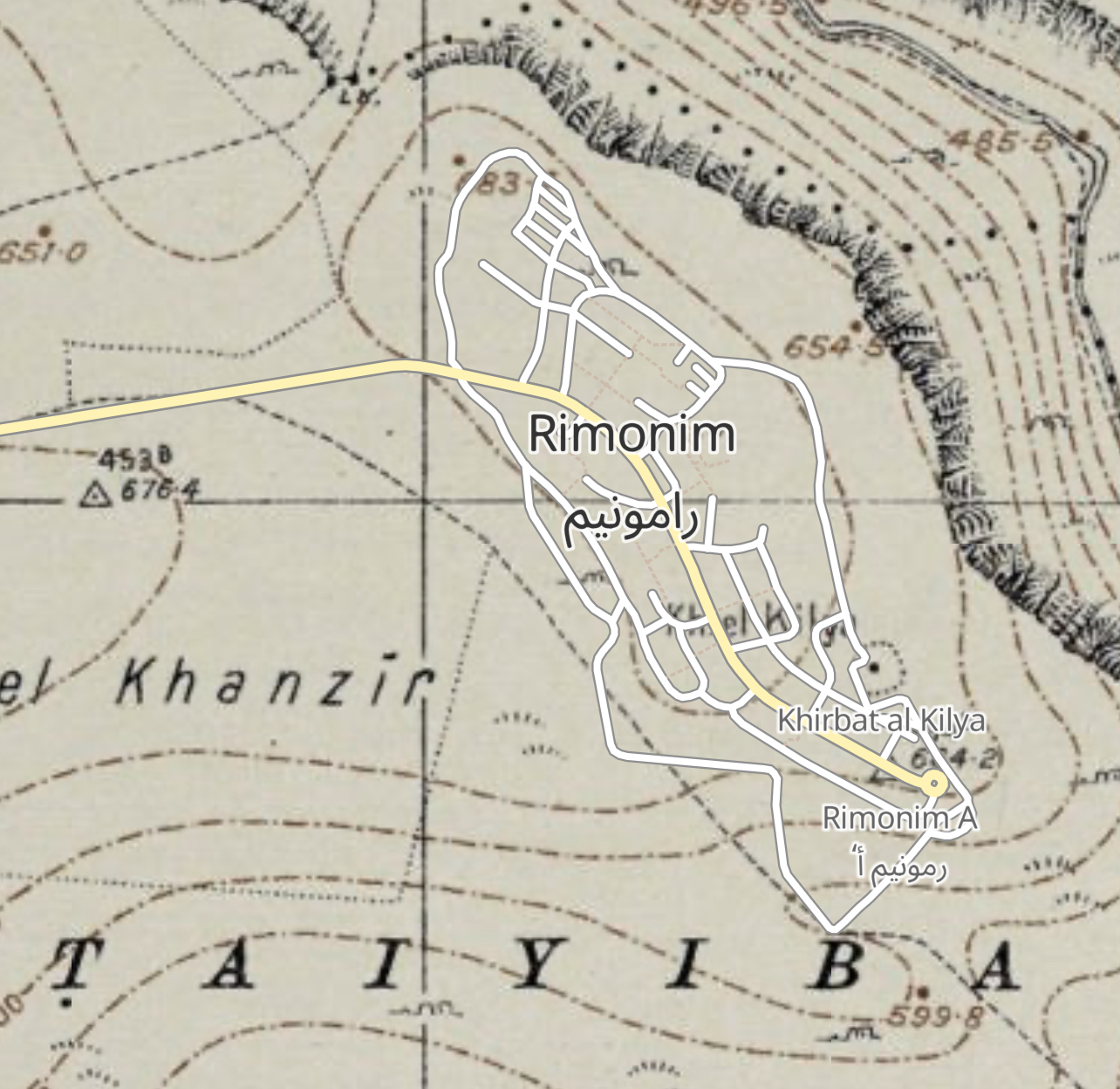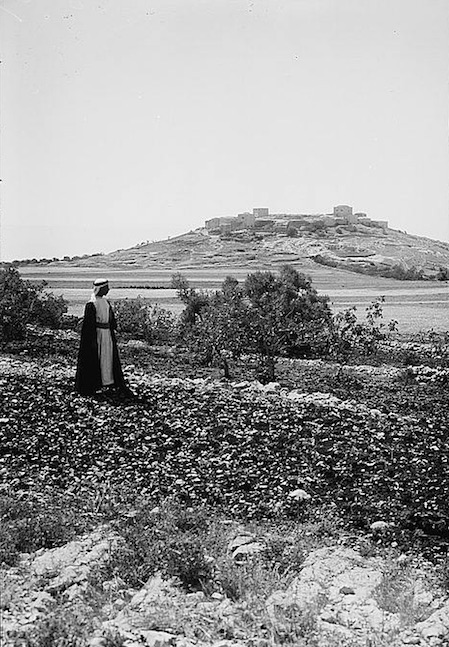|
Rimmon
Rimmon or Rimon () is a Hebrew word meaning 'pomegranate'. It appears as a name in the Hebrew Bible where, when translated to Greek, it takes the form Remmon Ρεμμων, ''Remmōn''). Hebrew Bible Place-names Rimmon may refer to: * Rimmon, one of the "uttermost cities" of Judah, afterwards given to Simeon (Joshua 15:21, 32; 19:7; 1 Chronicles 4:32). In Joshua 15:32, Ain and Rimmon are mentioned separately, but in Joshua 19:7 and 1 Chronicles 4:32 the two words are probably to be combined, as forming together the name of one place, Ain-Rimmon = "the spring of the pomegranate" (compare Nehemiah 11:29). It has been identified with Um er-Rumamin, about 13 miles south-west of Hebron. Zechariah 14:10 describes it as "south of Jerusalem," to distinguish it from other Rimmons; and uses it in conjunction with Geba to describe the latitudinal span of the kingdom of Judah. * The ''Rock of Rimmon'', where the Benjamites fled (Judges 20:45, 47; 21:13), and where they maintained thems ... [...More Info...] [...Related Items...] OR: [Wikipedia] [Google] [Baidu] |
Rimonim
Rimonim (), is an Israeli settlement in the West Bank. Located on the Allon Road, about a twenty-minute drive north-east from Jerusalem, it falls under the jurisdiction of Mateh Binyamin Regional Council. In it had a population of . The international community considers Israeli settlements in the West Bank illegal under international law, but the Israeli government disputes this. Etymology The village is named after the biblical Rock of Rimmon (present-day Rammun). The name comes from the Book of Judges: "But six hundred men turned and fled toward the wilderness unto the rock of Rimmon, and abode in the rock of Rimmon four months" (Judges, 20:47). History According to ARIJ, Israel confiscated 393 dunam of land from the nearby Palestinian town of Taybeh in order to construct Rimonim in 1977. Rimonim was established in 1977 (20 Shevat 5737) as a temporary pioneer Nahal military outpost. Three years later in 1980 (on 4 Tishrei 5741), it moved to the current location, demili ... [...More Info...] [...Related Items...] OR: [Wikipedia] [Google] [Baidu] |
Rammun
Rammun () is a Palestinian town in the Ramallah and al-Bireh Governorate in the central West Bank, located twelve kilometers east of Ramallah and three kilometers south of Taybeh. Other nearby towns include Deir Dibwan to the southwest, Beitin to the east and Ein Yabrud to the northeast. History and archeology Sherds from Iron Age I, Hellenistic, Roman, Byzantine, Crusader/Ayyubid and Mamluk eras have been found.Finkelstein et al, 1997, p. 538 Mosaics and ancient cisterns have been found.Dauphin, 1998, p. 835 Van der Velde (in 1854) assumed that Rammun was the place mentioned in the Bible as ''Rimmon'', Sela Rimmon. The ''Rock of Rimmon'' was where the Benjamites fled (Judges 20:45, 47; 21:13), and where they maintained themselves for four months after the battle at Gibeah. It also is suggested to be the town of ''Remmon'' (, ''Remmōn'') mentioned in the Onomasticon and in the Map of Madaba, located fifteen miles north of Jerusalem, between Bethel and Jericho. Ther ... [...More Info...] [...Related Items...] OR: [Wikipedia] [Google] [Baidu] |
Hadad
Hadad (), Haddad, Adad ( Akkadian: 𒀭𒅎 '' DIM'', pronounced as ''Adād''), or Iškur ( Sumerian) was the storm- and rain-god in the Canaanite and ancient Mesopotamian religions. He was attested in Ebla as "Hadda" in c. 2500 BCE. From the Levant, Hadad was introduced to Mesopotamia by the Amorites, where he became known as the Akkadian (Assyrian-Babylonian) god Adad. Adad and Iškur are usually written with the logogram - the same symbol used for the Hurrian god Teshub. Hadad was also called Rimon/Rimmon, Pidar, Rapiu, Baal-Zephon, or often simply Baʿal (Lord); however, the latter title was also used for other gods. The bull was the symbolic animal of Hadad. He appeared bearded, often holding a club and thunderbolt and wearing a bull-horned headdress. Hadad was equated with the Greek god Zeus, the Roman god Jupiter ( Jupiter Dolichenus), as well as the Babylonian Bel. The Baal Cycle or Epic of Baal is a collection of stories about the Canaanite Baal, also refe ... [...More Info...] [...Related Items...] OR: [Wikipedia] [Google] [Baidu] |
List Of Minor Biblical Places
This is a list of places mentioned in the Bible, which do not have their own Wikipedia articles. See also the list of biblical places for locations which do have their own article. A Abana Abana, according to 2 Kings 5:12, was one of the " rivers of Damascus", along with the Pharpar river. Abdon Abdon was a Levitical city in Asher allocated to the Gershonites according to Joshua 21:30 and 1 Chronicles 6:74. Abel-Shittim Abel-Shittim, the last Israelite encampment before crossing into the Promised Land, is identified by Josephus with Abila in Peraea, probably the site of modern Tell el-Hammam in Jordan. Adam Adam was a location which, according to Joshua 3:16, was along the Jordan River, near Zarethan. According to Cheyne and Black, it may be a scribal error for "Adamah". Adadah Adadah is the name of a town mentioned in Joshua 15:22, in a list of towns inside the territory of the Tribe of Judah. The name "Adadah" appears nowhere else in the Bible."Adadah", in According t ... [...More Info...] [...Related Items...] OR: [Wikipedia] [Google] [Baidu] |
Pomegranate
The pomegranate (''Punica granatum'') is a fruit-bearing deciduous shrub in the family Lythraceae, subfamily Punica, Punicoideae, that grows between tall. Rich in symbolic and mythological associations in many cultures, it is thought to have originated from Afghanistan and Iran before being introduced and exported to other parts of Asia, Africa, and Europe. It was introduced into Spanish America in the late 16th century and into California by New Spain, Spanish settlers in 1769. It is widely cultivated throughout West Asia and the Caucasus region, South Asia, Central Asia, North Africa, north and tropical Africa, the drier parts of Southeast Asia, and the Mediterranean Basin. The fruit is typically in season in the Northern Hemisphere from September to February, and in the Southern Hemisphere from March to May. The pomegranate and its juice are variously used in baking, cooking, juice blends, garnish (food), garnishes, non-alcoholic drinks, and cocktails. Etymology The name ... [...More Info...] [...Related Items...] OR: [Wikipedia] [Google] [Baidu] |
Ancient Galilee
Ancient history is a time period from the beginning of writing and recorded human history through late antiquity. The span of recorded history is roughly 5,000 years, beginning with the development of Sumerian cuneiform script. Ancient history covers all continents inhabited by humans in the period 3000 BCAD 500, ending with the expansion of Islam in late antiquity. The three-age system periodises ancient history into the Stone Age, the Bronze Age, and the Iron Age, with recorded history generally considered to begin with the Bronze Age. The start and end of the three ages vary between world regions. In many regions the Bronze Age is generally considered to begin a few centuries prior to 3000 BC, while the end of the Iron Age varies from the early first millennium BC in some regions to the late first millennium AD in others. During the time period of ancient history, the world population was exponentially increasing due to the Neolithic Revolution, which was in full progr ... [...More Info...] [...Related Items...] OR: [Wikipedia] [Google] [Baidu] |
Second Book Of Kings
The Book of Kings (, '' Sēfer Məlāḵīm'') is a book in the Hebrew Bible, found as two books (1–2 Kings) in the Old Testament of the Christian Bible. It concludes the Deuteronomistic history, a history of ancient Israel also including the books of Joshua, Judges, and Samuel. Biblical commentators believe the Books of Kings mixes legends, folktales, miracle stories and "fictional constructions" in with the annals for the purpose of providing a theological explanation for the destruction of the Kingdom of Judah by Babylon in c. 586 BC and to provide a foundation for a return from Babylonian exile.Sweeney, p1/ref> The two books of Kings present a history of ancient Israel and Judah, from the death of King David to the release of Jehoiachin from imprisonment in Babylon—a period of some 400 years (). Scholars tend to treat the books as consisting of a first edition from the late 7th century BC and of a second and final edition from the mid-6th century BC.Fretheim, p ... [...More Info...] [...Related Items...] OR: [Wikipedia] [Google] [Baidu] |
Aram (region)
Aram (; ; ) was a historical region mentioned in early cuneiforms and in the Bible. The area did not develop into a larger empire but consisted of several small states in present-day Syria. Some of the states are mentioned in the Hebrew Bible, Aram-Damascus being the most outstanding one, which came to encompass most of Syria. In the Bible, Aram-Damascus is simply commonly referred to as Aram. After the final conquest by the rising Neo-Assyrian Empire in the second half of the 8th century and also during the later consecutive rules of the Neo-Babylonian Empire (612–539 BCE) and the Achaemenid Empire (539–332 BCE), the region of Aram lost most of its sovereignty. During the Seleucid period (312-64 BCE), the term ''Syria'' was introduced as Hellenistic designation for this region. By the beginning of the 5th century, that practice also started to affect terminology of Aramean ecclesiastical and literary elites, and ''Syrian'' labels started to gain frequency and acceptance not ... [...More Info...] [...Related Items...] OR: [Wikipedia] [Google] [Baidu] |
Yohanan Aharoni
Yohanan Aharoni (; 7 June 1919 – 9 February 1976) was an Israeli archaeologist and historical geographer, chairman of the Department of Near East Studies and chairman of the Tel Aviv University Institute of Archaeology, Institute of Archaeology at Tel Aviv University. Life Born to the Aronheim family, in Germany on 7 June 1919, Aharoni immigrated to Mandatory Palestine in 1933. He studied at the Hebrew Reali School in Haifa, and later at the Mikve Yisrael agricultural school. He married Miriam Gross (archaeologist), Miriam Gross and became a member of kibbutz Alonim, where he lived until 1947. Career Aharoni studied archaeology at the Hebrew University of Jerusalem and began to teach there in 1954. By 1966, he became a professor at the university. However, in 1968, he moved to Tel Aviv University and replaced Shemuel Yeivin as chairman of the Department of Near East Studies. Together with his student Moshe Kochavi, his academic staff from his archaeological projects, and the tea ... [...More Info...] [...Related Items...] OR: [Wikipedia] [Google] [Baidu] |
Louis Ginzberg
Louis Ginzberg (, ''Levy Gintzburg''; , ''Levy Ginzberg''; November 28, 1873 – November 11, 1953) was a Russian-born American rabbi and Talmudic scholar of Lithuanian-Jewish descent, contributing editor to numerous articles of '' The Jewish Encyclopedia'' (1906), and leading figure in the Conservative movement of Judaism during the early 20th century. Early life Ginzberg was born in Kaunas, Vilna Governorate (then called Kovno). His religious Lithuanian-Jewish family's piety and erudition were renowned, seeing that they traced their lineage back to the Gaon of Vilna's brother. Ginzberg received a traditional Jewish education, and later studied in German universities.(November 28, 1943Leaders to Honor Louis Ginzberg, 70: On Eve of Birthday He Says Future of Jew Is Largely Up to America" ''The New York Times''. Retrieved December 7, 2023. Career Ginzberg first arrived in the United States in 1899. He began teaching the Talmud at the Jewish Theological Seminary of Amer ... [...More Info...] [...Related Items...] OR: [Wikipedia] [Google] [Baidu] |
Aapeli Saarisalo
Simo Tapio Puupponen (23 October 1915 – 11 October 1967), better known by the pen name Aapeli, was a Finnish writer and novelist. Aapeli was born in Kuopio, and became a journalist for the ''Pohjois-Savo'' and ''Savon Sanomat'' newspapers. In 1959 Aapeli won the Eino Leino Prize and the State literature prize. He died, aged 51, in Helsinki. His novels were turned into films and plays after his death in the 1970s. In 1977 his historical novels of the ''Aika hyvä ihmiseksi'' series were made into a feature film A feature film or feature-length film (often abbreviated to feature), also called a theatrical film, is a film (Film, motion picture, "movie" or simply “picture”) with a running time long enough to be considered the principal or sole present .... ReferencesBiography in Biografiakeskus External links * 1915 births 1967 deaths People from Kuopio People from Kuopio Province (Grand Duchy of Finland) Writers from North Savo Recipients of the Eino Leino Priz ... [...More Info...] [...Related Items...] OR: [Wikipedia] [Google] [Baidu] |
King Saul
Saul (; , ; , ; ) was a monarch of ancient Israel and Judah and, according to the Hebrew Bible and Old Testament, the first king of the United Monarchy, a polity of uncertain historicity. His reign, traditionally placed in the late eleventh century BCE, according to the Bible, marked the transition of the Israelites from a scattered tribal society ruled by various judges to organized statehood. The historicity of Saul and the United Kingdom of Israel is not universally accepted, as what is known of both comes exclusively from the Hebrew Bible. According to the text, he was anointed as king of the Israelites by Samuel, and reigned from Gibeah. Saul is said to have committed suicide when he fell on his sword during a battle with the Philistines at Mount Gilboa, in which three of his sons were also killed. Saul's son Ish-bosheth succeeded him to the throne, reigning for only two years before being murdered by his own military leaders. Saul's son-in-law David the ... [...More Info...] [...Related Items...] OR: [Wikipedia] [Google] [Baidu] |








